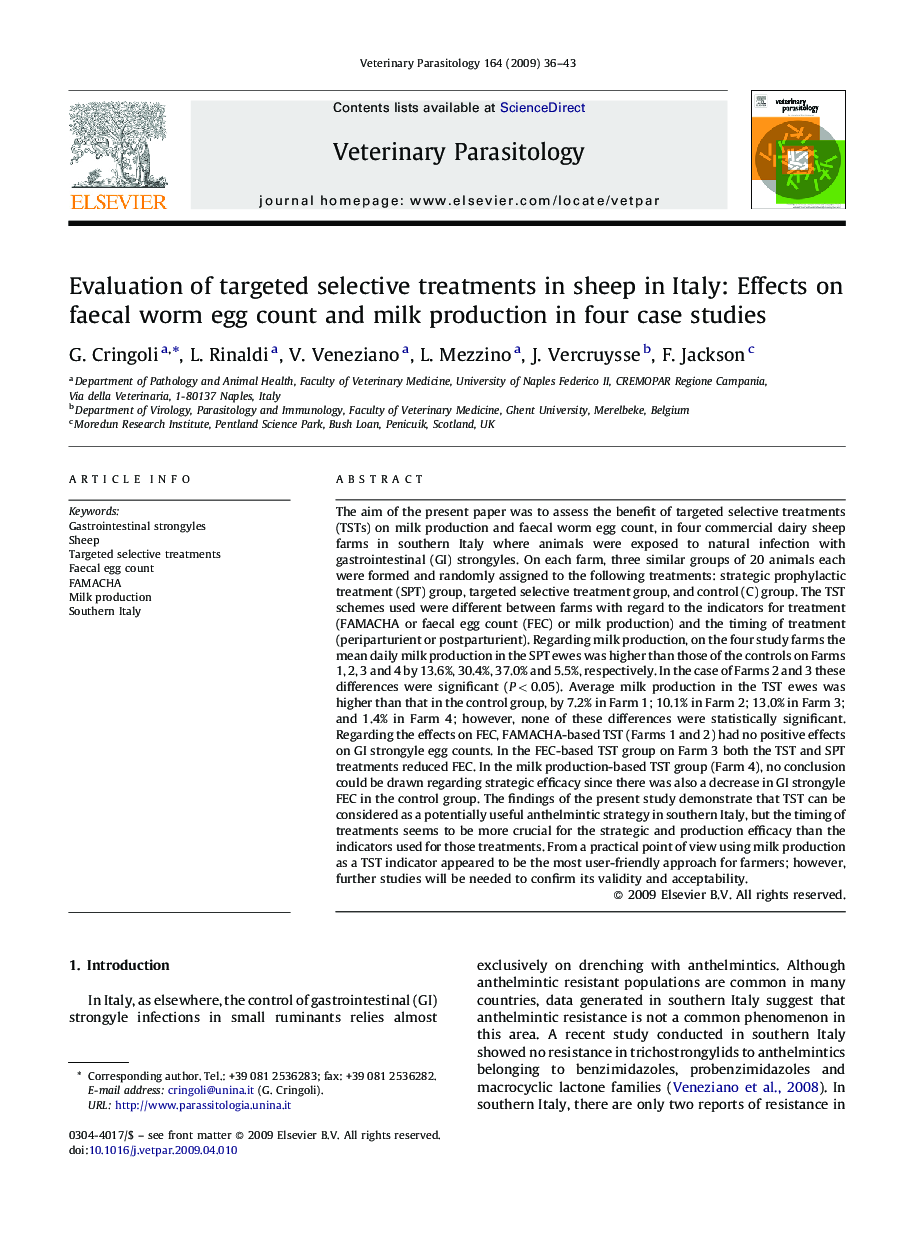| Article ID | Journal | Published Year | Pages | File Type |
|---|---|---|---|---|
| 2471175 | Veterinary Parasitology | 2009 | 8 Pages |
The aim of the present paper was to assess the benefit of targeted selective treatments (TSTs) on milk production and faecal worm egg count, in four commercial dairy sheep farms in southern Italy where animals were exposed to natural infection with gastrointestinal (GI) strongyles. On each farm, three similar groups of 20 animals each were formed and randomly assigned to the following treatments: strategic prophylactic treatment (SPT) group, targeted selective treatment group, and control (C) group. The TST schemes used were different between farms with regard to the indicators for treatment (FAMACHA or faecal egg count (FEC) or milk production) and the timing of treatment (periparturient or postparturient). Regarding milk production, on the four study farms the mean daily milk production in the SPT ewes was higher than those of the controls on Farms 1, 2, 3 and 4 by 13.6%, 30.4%, 37.0% and 5.5%, respectively. In the case of Farms 2 and 3 these differences were significant (P < 0.05). Average milk production in the TST ewes was higher than that in the control group, by 7.2% in Farm 1; 10.1% in Farm 2; 13.0% in Farm 3; and 1.4% in Farm 4; however, none of these differences were statistically significant. Regarding the effects on FEC, FAMACHA-based TST (Farms 1 and 2) had no positive effects on GI strongyle egg counts. In the FEC-based TST group on Farm 3 both the TST and SPT treatments reduced FEC. In the milk production-based TST group (Farm 4), no conclusion could be drawn regarding strategic efficacy since there was also a decrease in GI strongyle FEC in the control group. The findings of the present study demonstrate that TST can be considered as a potentially useful anthelmintic strategy in southern Italy, but the timing of treatments seems to be more crucial for the strategic and production efficacy than the indicators used for those treatments. From a practical point of view using milk production as a TST indicator appeared to be the most user-friendly approach for farmers; however, further studies will be needed to confirm its validity and acceptability.
